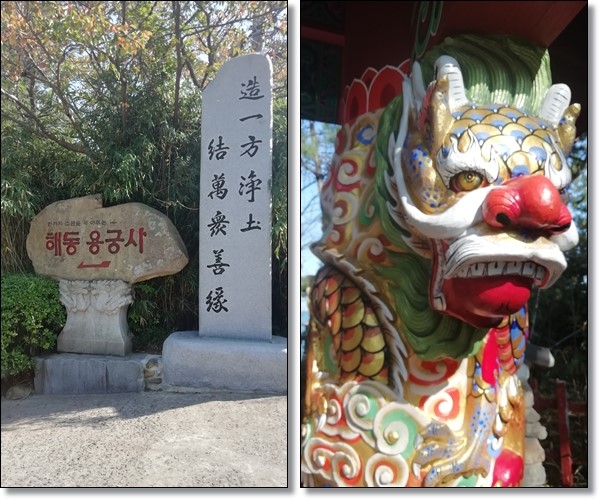By Petya Todorova
Petya Todorova is a graduate student of the Department of Global Hospitality and Tourism in Kyung Hee University, South Korea. She was granted the Global Korea Scholarship in 2019 and has been living in South Korea since August 2019. All images are courtesy of the author.
I learned about Buddhism when I was an undergraduate student in my BA program of South, East, and Southeast Asia. However, since South Korea was my main interest, I started to learn more about Buddhism in Korea, its history, and its role in Korean society. This is why I decided that if I ever went to South Korea, I would visit a Buddhist temple and I would learn more about Korean Buddhism from the source!
The first Buddhist temple that I visited was Haedong Yonggungsa in Busan. The temple was built in the 14th century on the seaside. I hiked for over an hour to get to the temple.
One of the most famous and important holidays in South Korea is Buddha’s Birthday (in Korean it is called Bucheonim Oshin Nal) and it is a public holiday for everyone. The Lotus Lantern Festival (Yeondeunghoe) also takes place during the Buddha’s Birthday in South Korea. In 2020, the festival was inscribed in UNESCO’s Intangible Cultural Heritage List. Unfortunately, last year and this year the Buddhist community in South Korea voluntarily decided to cancel the festival to prevent the spread of the COVID-19 pandemic.
The temple Jogyesa, the main temple of one of the Jogye Order (one of the major orders of Korean Buddhism), was open for the Buddha’s Birthday, so I saw this as an opportunity to see how Korean people celebrate.
When I entered the temple, I was greeted by hundreds of colourful paper lanterns:
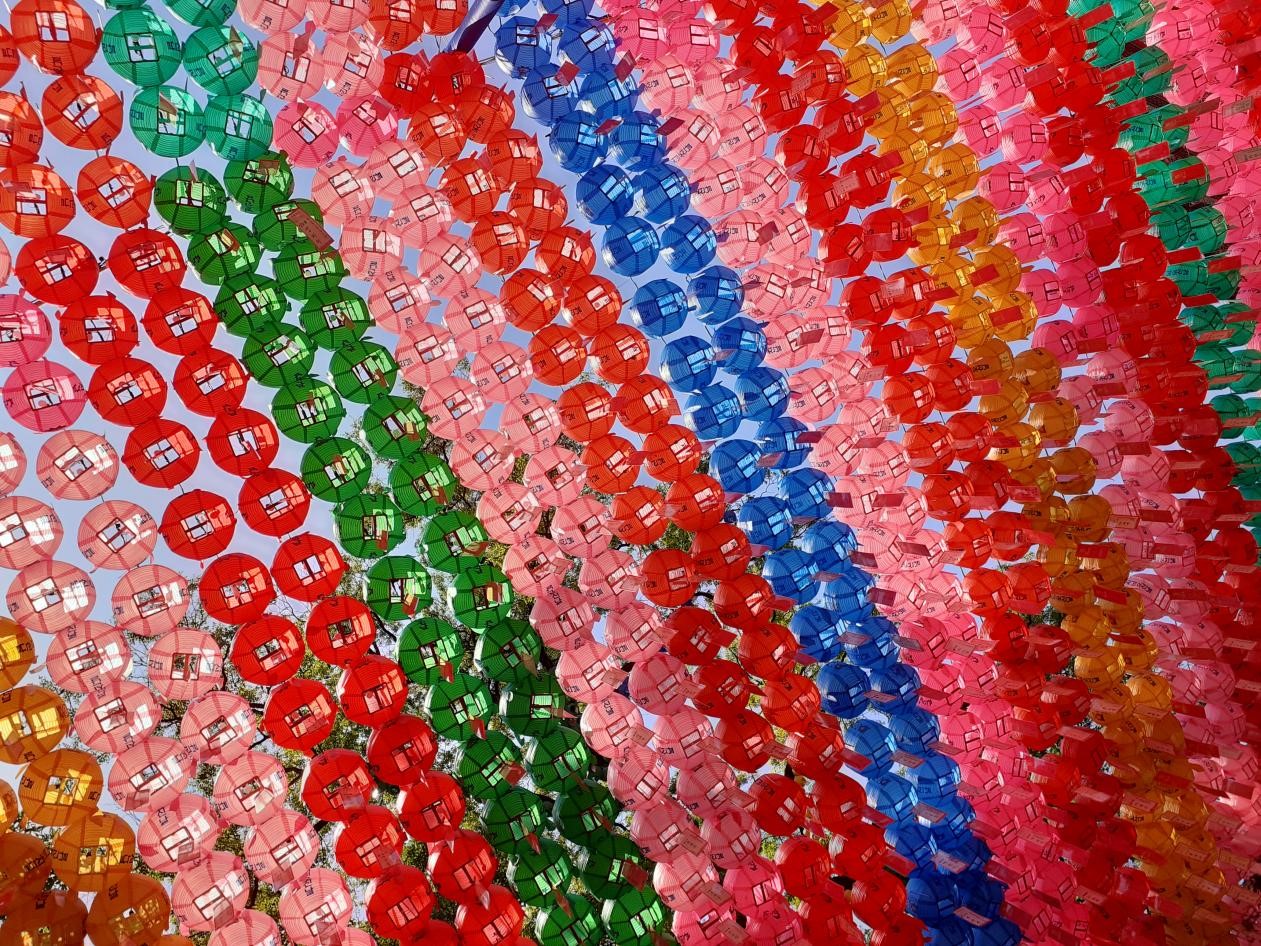
Despite that there were at least 300 people in the temple at one time when I was there, the thing that impressed me was how quiet it was. It was so quiet because everyone was praying. Maybe because there were so many people, I was expecting that it would be noisy, but since everyone was praying, it was so quiet, it seemed surreal and I felt like I was in another world.
The organization was very well prepared. People were lining up to enter the main hall, the Daeungjeon. They were assisted by the Jogeysa Youth Group, which was directing them to the queues to where they could pray. For example, there was a baby Buddha statue where people with young children were praying for their health while holding them in front of the statue.

There were also people waiting in line to touch the Pagoda tree and pray. I was told by one of the visitors that the Pagoda tree in Jogyesa was a Seoul City Protected Tree.
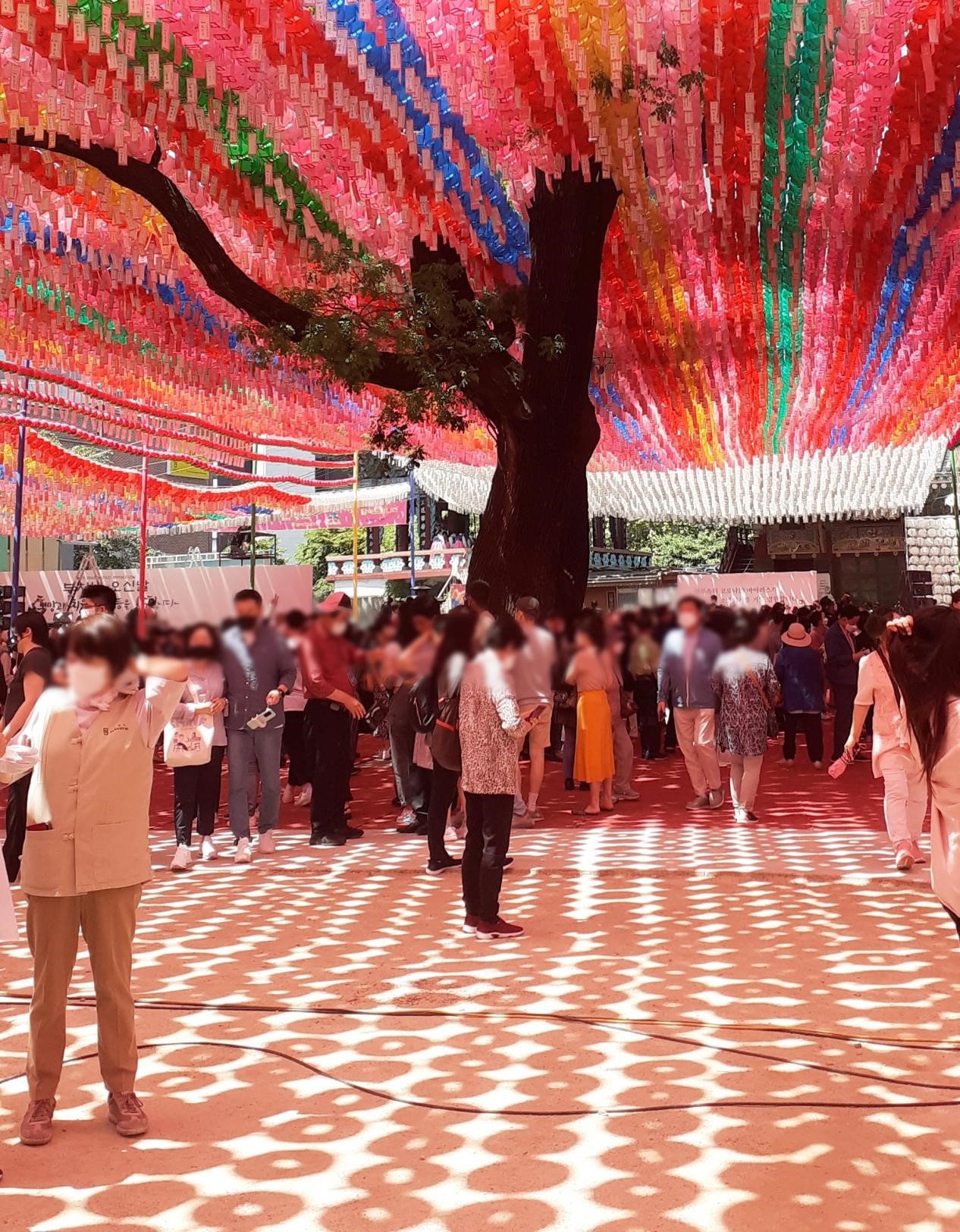
The most fascinating view was of the three statues of the Buddha inside the Daeungjeon. I really wanted to enter the hall and see the statues, but since I am not Buddhist, I thought it would be disrespectful of me to do so, so this time I just observed them from afar and observed the rituals people did in front of the main hall and inside.
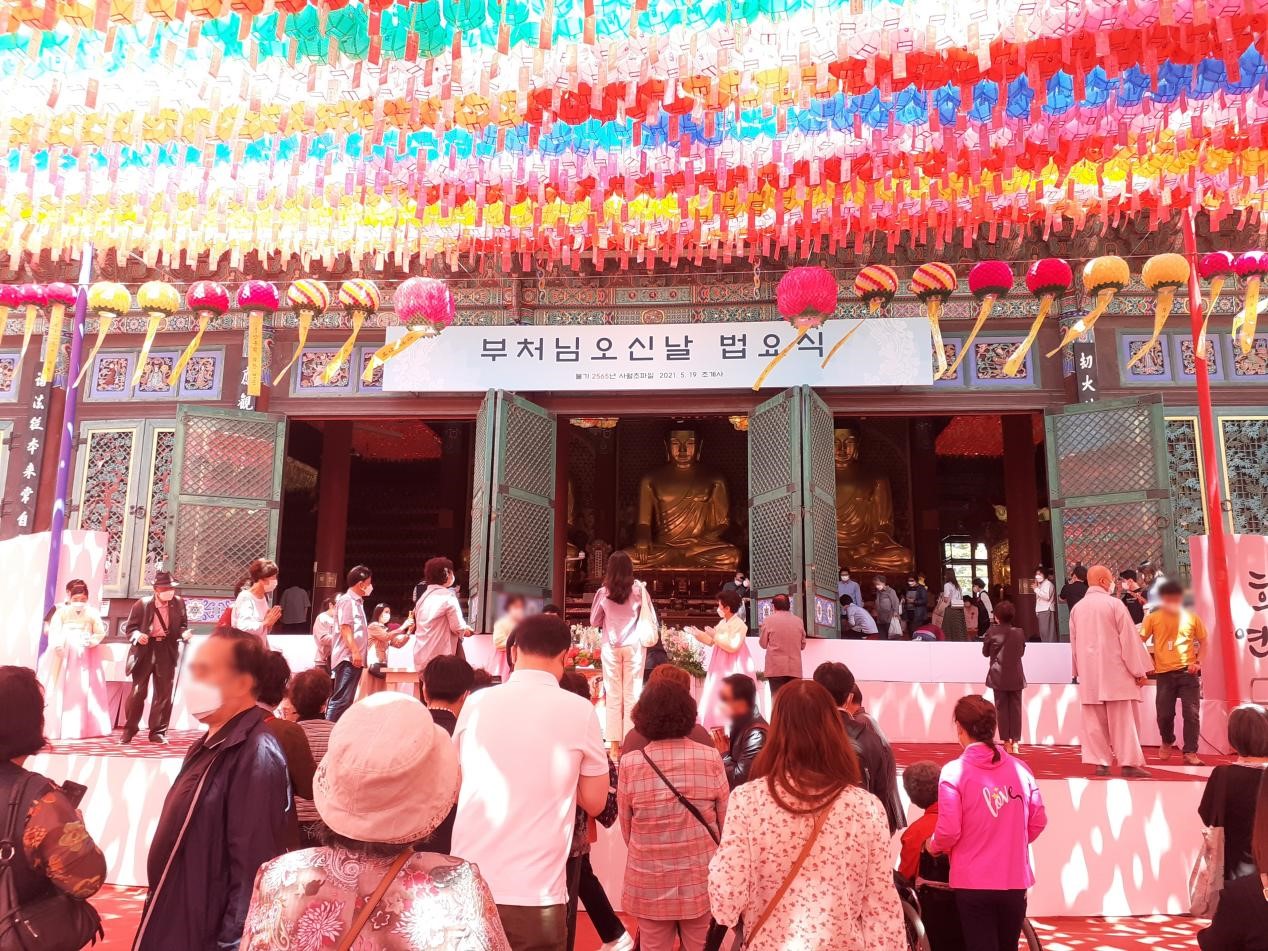
There was one person standing next to me, and I observed to them that it appeared that the day was very important for all the people who had gathered here to celebrate. He told me that this year they were praying for everyone’s health and happiness, and for people to be hopeful. Unfortunately, they cannot celebrate like they used to: the Lotus Lantern Festival was cancelled, so they prayed that next year the festival would be held.
What impressed me was how everyone seemed to be in their own private space of spirituality – despite the fact that there were hundreds of people, people could still close their eyes and focus on their prayer anywhere in the temple. This sounds very much like clearing the mind to me.
Right next to the Jogyesa temple, there is the Central Buddhist Museum where an exhibition dedicated to the Lotus Lantern Festival is being held until late July. The exhibition includes traditional Korean Buddhist art, including lanterns in different shapes such as fish, the Korean mandolin, crane, tools for making lanterns, and documents since the times of the kingdom of Goryeo telling the story of the Lantern Festival.
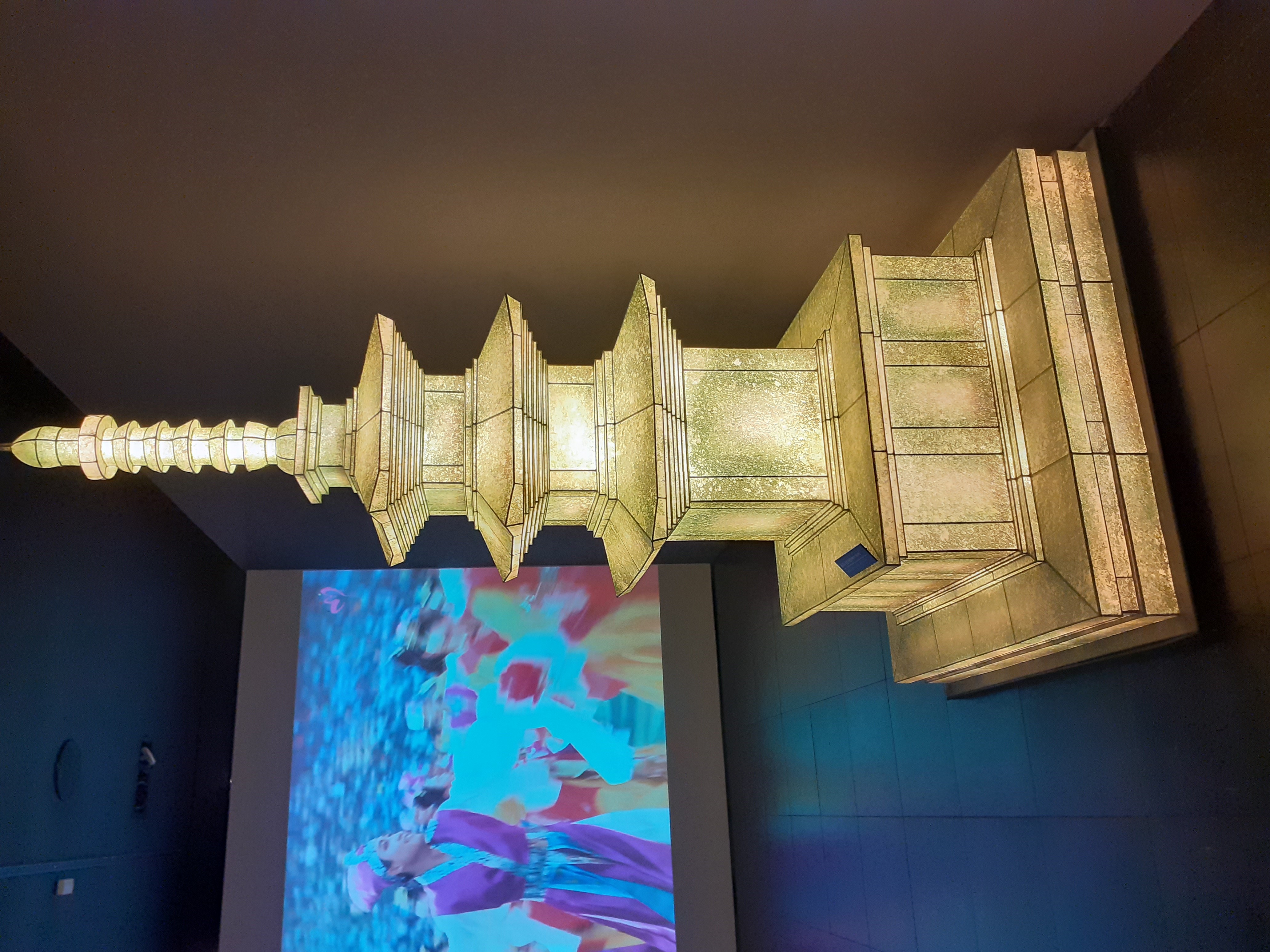
The day was very special to me just from observing the way people celebrated it: colourfully, brightly, and warmly. The fact that it was special to so many people made it a special memory to me. This is why I decided to learn more about Buddhist culture in Korea while I am here and decided to participate in a temple stay program.
I very much look forward to this temple stay.


